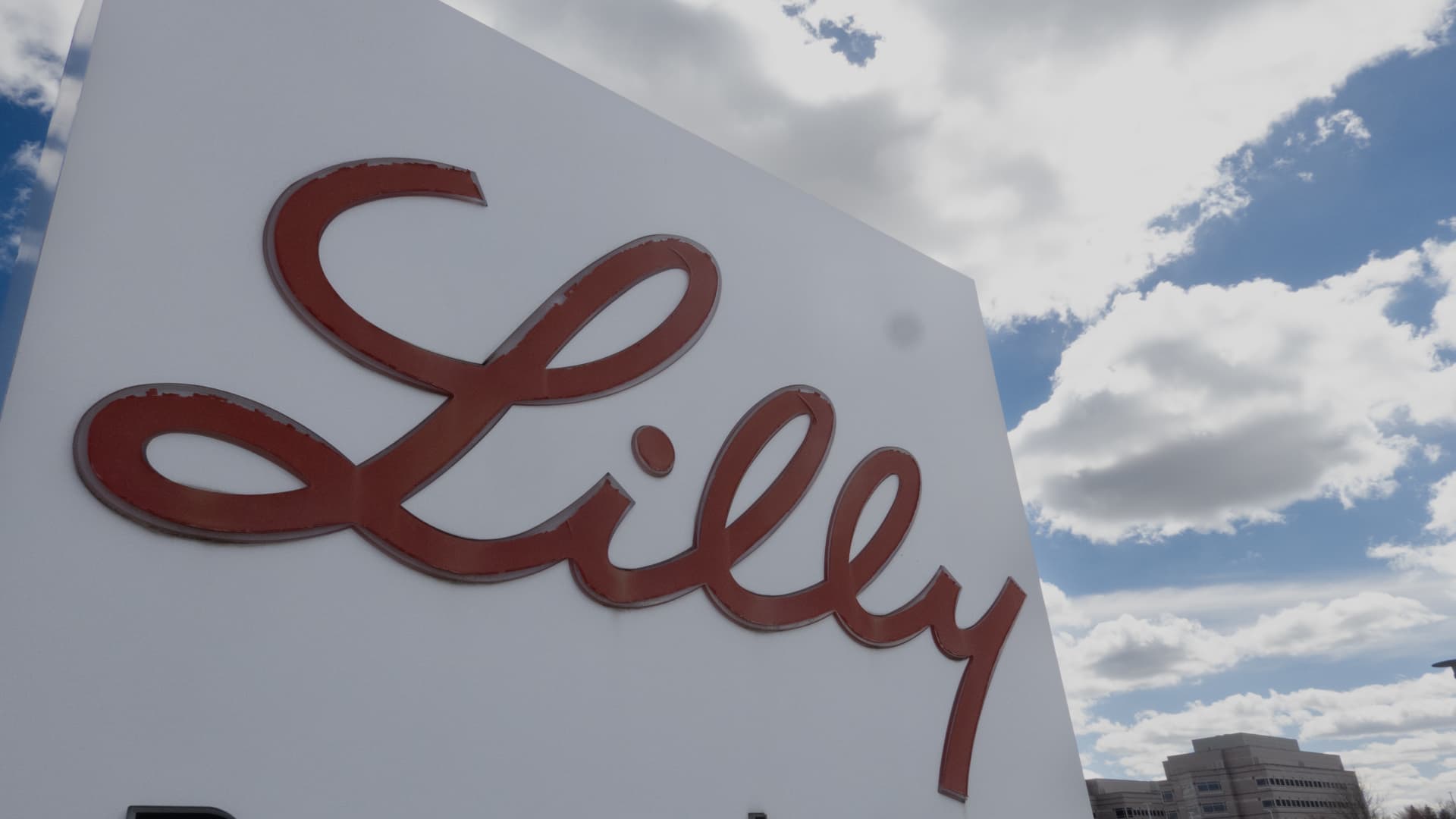A sign with the company logo sits outside of the headquarters of Eli Lilly in Indianapolis, Indiana, on March 17, 2024.
Scott Olson | Getty Images
Eli Lilly reached a $1 trillion market capitalization on Friday, the first health-care company in the world to join the exclusive club dominated by tech firms.
Eli Lilly briefly hit the $1 trillion mark in morning trading before retreating. It was last trading around $1,048 a share.
The company’s stock has climbed more than 36% this year as investors applaud the gains it has made over chief rival Novo Nordisk in the GLP-1 drug space. The Indianapolis, Indiana-based drugmaker’s stock has been riding the skyrocketing popularity of its weight loss injection Zepbound and diabetes treatment Mounjaro. Demand is only expected to grow as both approvals for treatments’ uses and insurance coverage expand.
Eli Lilly’s stock has soared on the back of the success of its drugs Mounjaro and Zepbound.
Eli Lilly will likely remain a dominant player in the weight loss drug market, which some analysts believe could be worth more than $150 billion by the early 2030s.
The runaway success of Zepbound, Mounjaro
Eli Lilly, a pharmaceutical chemist and Union veteran of the U.S. Civil War, founded his namesake company in 1876. It has long been at the forefront of the diabetes treatment space, introducing the world’s first commercial insulin in 1923.
Eli Lilly became a publicly traded company on the New York Stock Exchange by 1952, and for decades relied on a slate of widely successful products to drive much of its profits and revenue. They include its insulins, the antidepressant pill Prozac and the earliest polio vaccine.
An Eli Lilly & Co. Zepbound injection pen, March 28, 2024.
Bloomberg | Bloomberg | Getty Images
Eli Lilly hit the jackpot with the May 2022 approval of tirzepatide for diabetes, which is sold as Mounjaro. It started to compete with Novo Nordisk’s diabetes injection Ozempic, which had entered the market a few years earlier.
But Eli Lilly brought a new way to treat diabetes and eventually, obesity. Tirzepatide works by imitating two hormones produced in the gut called GLP-1 and GIP. GLP-1 helps reduce food intake and appetite. GIP, which also suppresses appetite, may also improve how the body breaks down sugar and fat.
Meanwhile, Novo Nordisk’s semaglutide, the active ingredient in Ozempic and its weight loss drug Wegovy, only targets GLP-1.
Mounjaro achieved “blockbuster” status – meaning it generated more than $1 billion in annual sales – during its first full year on the market.
Eli Lilly then won approval for tirzepatide as a treatment for obesity, which is sold as Zepbound and now competes with Novo Nordisk’s Wegovy.
